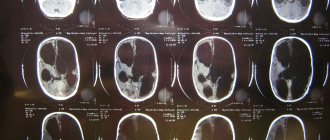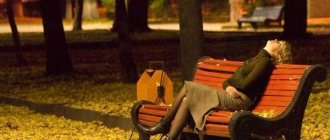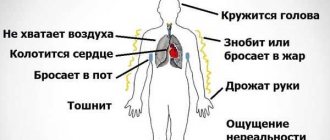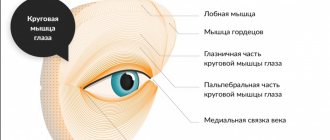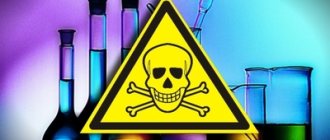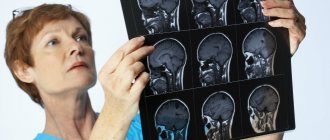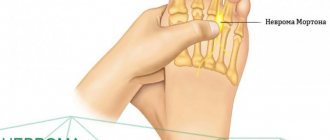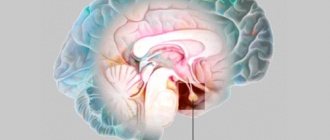There is no consensus regarding vegetative-vascular dystonia, its symptoms and treatment in adolescents. Some doctors consider VSD to be an acceptable condition associated with transitional stages in a child’s body. But most classify dystonia as a complex of pathological processes. This is supported by the fact that symptoms of VSD have been identified in some newborns.
Dystonia can occur at different stages of a child's development. It is important to identify it when symptoms are early to avoid harmful consequences.
Causes
This syndrome does not occur on its own, but develops as a result of prolonged exposure to various negative factors such as:
- changes in the body's hormonal levels,
- relationship-related stress
- bad habits,
- insufficiently active lifestyle,
- severe illnesses suffered in the recent past.
Another important factor is the type of planned operation, lateralization resection, location and extent of the epileptogenic zone, which determine the chances of success of the operation and its relative risk. Sufficient motivation of the patient or legal guardian is an essential prerequisite for identifying frequently required preoperative examinations and their own operation.
Clinics of pediatric surgery and traumatology. Epilepsy is a disease that causes repeated unprovoked seizures. In addition to idiopathic epilepsies, which have no morphological correlate, epilepsies are symptomatic, with epileptic brain lesions behind them. This may include malformations of the brain, traumatic or post-inflammatory changes, or near mesial temporary sclerosis. The degenerative process affects mainly near the hippocampus and frontotemporal structures.
Most adolescents are exposed to emotional stress that contributes to the occurrence of VSD. They become more vulnerable and can easily fall under the negative influence of others. All this can lead to autonomic dysfunction. If in a teenager the growth rate of muscle tissue exceeds the growth rate of the peripheral nervous system, this can also cause the appearance of this painful syndrome.
The remaining patients are treatment refractory, and about half of them may be suitable candidates for epileptosurgical treatment. In general, it is recommended that a patient who does not achieve remission within two years after the start of withdrawal should be referred to a specialized center for evaluation of the possibility of epileptotic surgery. The goal of the operation is to eliminate or at least reduce the number of seizures, especially in children, and to avoid the developmental impairment often associated with uncompensated seizures.
Modern neurosurgery continues to offer new treatment options for diseases that in the past few years have been virtually excluded from society for their owner. This involves the development of diagnostic techniques, surgical procedures, and surgical treatment options for patients. Epileptosurgery is experiencing a renaissance and is making increasing strides in advancing diagnostic procedures and surgical techniques.
The causes of VSD in girls and boys may differ. Since girls are more emotional, autonomic dysfunction can arise from excessive worries due to the judgments of others, conflict situations with friends, and public opinion. Also, menstruation can contribute to the manifestation of nervous disorders associated with autonomic dysfunction.
Less common signs of deep brain stimulation and vagal stimulation
Currently, neuromodulator therapy is indicated primarily for movement disorders in patients with Parkinson's disease.
A less common feature is significant tremor, and there is increasing experience among patients with dystonia. Even with limited literature data, it can be said that the best results are achieved with juvenile dystonia, leading to secondary dystonia depending on its cause and good results for late dystonia, less so in craniocervical. Neuromodulation for drug-resistant epilepsy is based on strategies for functional modulation of structures with the role of a pacemaker, trigger or windlass and functional elimination of the onset of seizure. Rapid puberty in young men can lead to inadequate strength loads, which negatively affect the heart. In addition, many young men start smoking and drinking earlier, and try drugs - all this also contributes to the development of autonomic dysfunction.
Hereditary predisposition to the occurrence of the disease cannot be discounted. If parents have cardiovascular disorders, this can be passed on to the teenager. In this case, parents from early childhood should closely monitor the state of his health, promote physical development, and hardening.
Neuromodulation therapy for epilepsy is currently dominated by the vagus nerve, in which the nucleus of the solitary tract through broad brain structures influences, resulting in a reduction in the number and severity of specific partial seizures with complex symptoms, but also in idiopathic generalized epilepsy. The minimally invasive nature of the extracranial characteristics and wide range of vagal stimulation suggest consideration for use in other conditions.
Correction of peripheral nerve parasites after unsuccessful regurgitation during intestinal transplantation
The most extensive experience is with depression, with limited data on vagal stimulation in Alzheimer's disease and migraine with depression. Despite correct and timely microsurgery of injured peripheral nerves, nerve regeneration is often unsuccessful and therefore functional treatment of the affected limb is insufficient. Permanent paresis in many cases can be corrected with the help of musculoskeletal transfers and transpositions or interventions on the vasoconstrictor apparatus.
Vegetative-vascular dystonia in adolescents
Vegetative-vascular dystonia in adolescents is a disease that affects the nervous and circulatory systems. VSD is also called somatoform autonomic dysfunction. The disease can manifest itself in different ways; there are three main types:
- hyperkinetic,
- hypokinetic,
- mixed.
The classification is based on the pathogenesis of the development of the disease and a set of basic symptoms.
Most often, vegetative-vascular dystonia is diagnosed in adolescents, and mainly mixed or hyperkinetic types are identified.
Manifestations of the disease in children can be different. The thing is that deviation can be provoked by various reasons, and adolescence is not the only one of them.
Hormonal changes in a child's body as they grow older affect their physical condition. In particular, activation of the gonads can change the child’s behavior at the level of the central nervous system. In addition, the circulatory system also undergoes changes. The risk of developing the disease increases under the influence of the following factors:
- the onset of a period of active hormonal changes;
- problematic and stressful situations;
- bad habits, in particular smoking, drinking alcohol, drugs and toxic substances;
- previous acute and chronic infectious diseases, which can cause the development of vegetative-vascular dystonia of the hypokinetic type;
- sedentary lifestyle. Low muscle tone and physical inactivity;
- excessive determination, perfectionism, tendency to neuroses and neurosis-like states.
The learning process, its intensity, increased demands from parents and teachers, uncontrolled emotionality caused by changes in the hormonal system - all this can be called the causes of vegetative-vascular dystonia in adolescents.
Main symptoms of pathology
Teenagers often complain that their health has deteriorated, namely:
- painful sensations appeared in the heart area;
- pulse became more frequent;
- heaviness appeared in the chest;
- difficulty breathing, shortness of breath;
- pulse rate changes, there is no stability;
- headache;
- darkens in the eyes;
- there is constipation or diarrhea;
- there is a urge to vomit;
- urination is impaired.
First experience of resuscitation surgery for Moby syndrome
To maintain proper limb positioning, including full passive momentum, and thus a terrain suitable for subsequent subsequent corrective surgery, careful care of the affected limb is necessary.
In case reports, we present videos and photographs of corrective procedures and their outcome in individual patients. Introduction. Moeby syndrome is a complex congenital disease of unclear etiology, which manifests itself in the complete loss or limitation of cranial nerve function based on impaired development of nuclei in the brain stem. With VSD there are acute attacks, but it can also have a calmer chronic course. The acute course manifests itself in the form of a vegetative-vascular crisis, which is also called a panic attack. This condition is accompanied by panic, hysteria, and an acute attack of anxiety, which is extremely difficult for a teenager to endure. The chronic form can proceed almost unnoticed, but in the acute form of this syndrome the patient suffers greatly from severe painful symptoms.
We handed over some of it. Some of the engine's inertia was used for recovery. Mazemeter so that there is no restriction on the chewing function. This unique operation can significantly improve both facial expression and facial muscle function, including improved speech in these disabled individuals.
Current Neurointensive Care Options
Disruption of peripheral nerve injuries has traditionally been treated with through sutures and loss of supralis grafts. We present our first experience in a post. Neurointensive care is the intensive treatment of patients with traumatic brain injury or brain diseases. In practice, these include severe brain damage and subarachnoid hemorrhage. Neurointensive care units in neurosurgical work are also often found in patients after spontaneous intramuscular bleeding or major brain surgery.
VSD can be caused by natural restructuring of the body during adolescence and not be related to any disease processes. In adolescents, blood pressure rises to normal adult levels, and the pulse rate decreases again to adult levels. This may also contribute to the occurrence of autonomic dysfunction.
But there are times when therapy is necessary. They are accompanied by the following manifestations of VSD:
- the temperature suddenly rises;
- sweat profusely;
- the face turns red or pale;
- the teenager becomes emotionally unstable.
Diagnostics
To make a diagnosis, the following examinations are prescribed:
- blood test to determine hormones;
- ultrasound examination of cerebral vessels;
- magnetic resonance imaging;
- ultrasound examination of the thyroid gland;
- specialist consultations.
Methods for diagnosing vegetative-vascular dystonia in adolescents
These examinations help to exclude other pathologies that have similar symptoms. Only a doctor can make a diagnosis of autonomic dysfunction based on an examination, the results of examinations and tests.
Memo for parents
VSD in adolescence should not be ignored. If the treatment of VSD does not require drug therapy, then it is necessary to consult a doctor about the pathology of the heart and blood vessels. All recommendations must be taken into account in order to avoid severe complications of this disease in the future.
Vegetative-vascular dystonia in adolescents should not be ignored. Such conditions do not always require drug treatment, but you should consult a doctor. Symptoms of VSD are nonspecific, therefore, as prescribed by a doctor, the teenager must be examined to make sure there is no organic pathology of the organs.
Prevention of VSD in a child must be addressed from an early age: instill a love of sports, develop a desire for a healthy lifestyle, and a rejection of bad habits. It is also important to create friendly relationships in the family.
The doctor’s recommendations for non-drug treatment of VSD must be followed to avoid the development of cardiovascular pathology, hypertension, neuroses and other diseases in the future. Only if you follow medical recommendations can you count on a favorable prognosis and the disappearance without consequences of all manifestations of VSD.
Treatment
VSD can be cured completely, although some doctors do not agree with this. The main thing is to realize that nothing bad will happen. Since autonomic dysfunction involves various manifestations of this syndrome, several specialized specialists are involved in diagnosis and treatment.
When VSD is diagnosed, a psychotherapist who can cure autonomic dysfunction without the use of medications will help you get rid of it forever.
However, there are times when drug therapy is necessary. Therapy can be medicinal or non-medicinal.
Drug therapy is carried out for severe VSD. For this they prescribe:
- Neurometabolic stimulants (nootropics), which also nourish the brain, resulting in improved memory, thinking, perception, and speech. These include drugs such as Piracetam, Cavinton, Pantogam. Vitamins and minerals are also prescribed.
- If necessary, antidepressants are prescribed; tranquilizers that have a calming effect on the central nervous system, and antipsychotics in small quantities intended to treat mental disorders. The use of these drugs is permitted only as prescribed by a neuropsychiatrist. Long-term drug treatment of adolescents is prohibited so that they do not become addicted to the drugs.
Neurometabolic stimulants
Non-drug treatments may include:
- for stress – drinking sedative herbal tea based on lemon balm, motherwort, valerian, thyme, hawthorn before bedtime;
- psychotherapy;
- massage;
- acupuncture;
- therapeutic exercises.
Often, manifestations of VSD go away on their own as the teenager grows older. If symptoms do not go away with age, then with timely treatment the prognosis is favorable. Most teenagers recover completely.
The duration of treatment depends on how promptly it is started. The duration of the course of therapy is determined by the doctor depending on the severity of signs of autonomic dysfunction in the teenager. The duration of active treatment with medications is no more than six months.
Today, VSD is quite common in adolescents, which can sometimes have a rather acute course. Teenagers aged 14-15 years are most susceptible to this phenomenon. If you do not pay due attention to this pathology, it can lead to quite serious problems. In our article we will tell you what VSD is, why it develops, what its symptoms are, and how the standard treatment for the condition is performed.
Prevention of vegetative-vascular dystonia in children and adolescents
Vegetative-vascular dystonia in adolescents and young children can be practically asymptomatic, especially if adults pay due attention to the prevention of VSD.
We are talking about leading a healthy lifestyle, playing sports at both an amateur and professional level, diet, as well as sleep and wakefulness. For better vascular condition, it is necessary to diversify your diet by adding more fiber and vitamins, as well as foods containing potassium and magnesium. But it is better to exclude fatty and fried foods or at least reduce their consumption to a minimum. The reason for avoiding thermally processed fats is the risk of developing atherosclerotic processes. Naturally, during this period it is best to increase the child’s time in the fresh air.
As noted above, vegetative-vascular dystonia in adolescents has a huge list of different symptoms. However, an important indicator that the disturbances are not caused by more serious diseases requiring immediate medical attention can be the absence of fever.
The combination of several common symptoms of VSD and elevated temperature indicates the presence of an infection or a source of inflammation in the body. Naturally, only an experienced doctor can diagnose an infection and promptly begin treatment of an infectious disease. Therefore, at the first signs of an increase in temperature, you should seek medical help rather than try to relieve the symptoms on your own.
Etiology, types and causes of VSD in adolescence
Vegetative-vascular dystonia is not inherently a specific disease; in medicine it is considered a complex of general problems. Due to this layering, interruptions in the blood supply occur, which leads to oxygen starvation of the internal organs.
Feedback from our reader - Olga Proskurova
I recently read an article that talks about the natural remedy Father George’s Monastic Collection for the treatment of VSD, hypertension and vascular diseases. With the help of this syrup you can PERMANENTLY cure VSD, hypertension, migraines, get rid of constant fatigue and many other diseases at home.
I’m not used to trusting any information, but I decided to check and ordered one package. I noticed changes within a week: constant headaches, apathy, pressure surges and tingling in the heart, which had tormented me for many years, receded, and after 2 weeks disappeared completely. Try it too, and if anyone is interested, below is the link to the article.
Due to oxygen starvation, weakened impulses arrive to the internal organs, which has a negative impact on the functioning of the vascular system. The child is in a depressed psychological state, as a result of which his tendency to develop many diseases increases. Often, vegetative-vascular dystonia in adolescents leads to the development of bronchial asthma, gastritis, and gallbladder dyskinesia.
As a rule, the first sign of this pathology appears at a young age, in a child who has not yet turned 6 years old. But superimposed hormonal changes in adolescents lead to the development of this pathology.
For the treatment of VARICOSE and cleaning blood vessels from THROMBUS, Elena Malysheva recommends a new method based on Cream of Varicose Veins. It contains 8 useful medicinal plants that are extremely effective in the treatment of VARICOSE. Only natural ingredients are used, no chemicals or hormones!
Important! The trigger for the development of adolescent VSD is an imbalance between body weight and the nervous system, that is, the peripheral nervous system lags behind the growth of the body.
There are different types of adolescent VSD, manifested by unique symptoms, for example:
- Hypertensive form - characterized by increased blood pressure, rapid heartbeat, chills, panic attack, and sudden onset of overexcitement. Moreover, blood pressure can increase not only during mental or physical stress, but also at rest.
- Hypotensive form - marked by low blood pressure, lethargy, nausea, sweating, fainting, fatigue.
- Cardiac form - characterized by cardiac disorders, manifested in heartbeat irregularities.
- Mixed form - manifested by symptoms of different types of dystonia.
Vegetative-vascular dystonia mainly develops during active growth of the body in combination with a colossal load, both psychological and physical. Medical workers claim that the pathology is provoked by rapid hormonal changes, which are characterized by a period of increased growth.
The nervous and circulatory systems, at the same time, are also unable to quickly restructure and develop, resulting in characteristic manifestations that lead to disruptions in the functioning of the heart and problems in the blood supply to tissues. Many internal organs do not receive the oxygen necessary during rapid development for their full functioning. Frequent stressful situations in teenagers, home and school problems, emotional overload, and bad habits leave their mark.
Factors provoking the disease
Medical professionals identify the following provoking factors leading to the development of imbalance:
- vascular disorder leading to cerebral hypoxia;
- impaired circulation of fluid in the spine;
- dysfunction of the hypothalamus.
The listed reasons often cause a violation of the child’s psyche and an inability to adapt to stress. The most common indirect causes of VSD include:
The listed problems in combination can lead to VSD syndrome. Adolescents with a hyperexcitable nervous system are more predisposed to it. Any stress at home or at school, while communicating with friends can become an accelerator for the onset of the disease. In addition, an incorrect daily routine, late falling asleep, and constant sitting at the computer often provoke attacks that can become chronic.
To GET RID of vegetative-vascular dystonia, Elena Malysheva recommends a new method based on the Monastic collection of Father George.
It contains 16 useful medicinal plants that are extremely effective in the treatment and prevention of VSD, arrhythmia, hypertension, migraines and many other diseases. Only natural ingredients are used, no chemicals or hormones!
Symptoms of teenage VSD
This disease in adolescents 14 years of age can manifest itself with the following symptoms:
Vegetative-vascular dystonia in adolescents is manifested by the symptoms listed above, which indicate that it is necessary to go to the doctor and start treatment.
Diagnosis and treatment of the disease
Vegetative-vascular syndrome requires mandatory diagnosis, which, in addition to collecting information about the clinical picture during a conversation with a parent and a teenager, involves an examination by an ophthalmologist, neurologist, psychologist, and endocrinologist.
The following research may also be required:
- Blood test for hormones.
- Ultrasound diagnosis of the thyroid gland.
- ECG of the brain.
- Ultrasound of the brain.
- Blood pressure control.
- MRI of the head.
This examination will help to collect complete information about the activity of the body.
Feedback from our reader - Alina Mezentseva
I recently read an article that talks about the natural cream “Bee Spas Kashtan” for treating varicose veins and cleaning blood vessels from blood clots. With this cream you can cure VARICOSIS FOREVER, eliminate pain, improve blood circulation, increase the tone of veins, quickly restore the walls of blood vessels, clean and restore varicose veins at home.
I’m not used to trusting any information, but I decided to check and ordered one package. I noticed changes within a week: the pain went away, my legs stopped “humming” and swelling, and after 2 weeks the venous lumps began to decrease. Try it too, and if anyone is interested, below is the link to the article.
Non-drug treatment of vegetative-vascular dystonia has a relationship with the child’s condition and the severity of the syndrome, based on:
Vegetative-vascular dystonia in adolescents
It seems that today almost every second teenager is diagnosed with “vegetative-vascular dystonia” (VSD). Some parents consider it a serious threat to the child’s health, while others consider it synonymous with “inflammation of the cunning.” So what exactly is vegetative-vascular dystonia in adolescence, is there a cure for it and is it possible to avoid it through prevention?
Vegetative-vascular dystonia, according to various estimates, occurs in 20-45% of adolescents. Such a wide range is due to the fact that VSD is not a disease, but a syndrome, a set of symptoms. This is a violation of the body’s normal reaction to stress, loads, and changes in usual conditions. And often the person himself and those around him may consider such a reaction to be the norm. Manifestations of vegetative-vascular dystonia can be very different: cardiac (pain, rapid heartbeat, feeling of irregular heartbeat), respiratory (feeling of lack of air), fluctuations in blood pressure, disorders of the gastrointestinal tract, increased fatigue, irritability, etc.
Teenagers at the forefront of the main attack of the VSD
It is in adolescents that vegetative-vascular dystonia occurs especially often and it is in this age group that it is the most serious problem. Firstly, one of the most common reasons for its development is a mismatch between physical development and the maturity of the nervous system. And the hormonal changes in the body that occur during puberty can become a provoking factor.
Secondly, the very life of a modern teenager is an excellent reason for the development of vegetative-vascular dystonia. On the one hand, there are huge academic loads and stress associated with relationships with peers and parents. On the other hand, there is insufficient physical activity, which is by no means uncommon in children today, disturbances in sleep/wake patterns due to “nightly hanging out” on the Internet, endless computer games, etc. At the same time, vegetative-vascular dystonia in itself can greatly complicate a child’s life, turning it into a vicious circle: academic loads provoke stress, stress leads to symptoms of VSD, which interfere with learning, and problems with learning, in turn, lead to new stress.
A number of problems are associated with the fact that parents do not always react correctly to the fact that their child has vegetative-vascular dystonia. Some do not pay attention to the manifestations of the syndrome for a very long time, considering them whims, pretense - and lead to the fact that the child begins to have real crises. Others, on the contrary, having barely heard the phrase “vegetative-vascular dystonia” (and sometimes having made this diagnosis on their own, without the help of a doctor), begin to treat the child as if he were sick: they constantly measure his temperature and blood pressure, stuff him with medicines and folk remedies, and forbid him any physical activity, from physical education at school to hiking and outdoor games.
Finally, vegetative-vascular dystonia in a teenager, as a rule, progresses with age if it is not treated.
Treatment of vegetative-vascular dystonia should be very individual and depend on how it manifests itself. First of all, it is necessary to normalize the daily routine: sleep at least 8 hours a day, go to bed and get up at a certain time, do not skip meals, spend at least an hour a day in the fresh air, watch less TV. All these truisms, oddly enough, are powerful means of preventing the development of VSD.
Attention should also be paid to nutrition. Excess weight, excess consumption of sweets, flour, and fats are also factors in the development of the syndrome. But, for example, strong tea or good ground coffee can be beneficial for the child’s health - if VSD manifests itself in the form of low blood pressure and lethargy. Enrich your teenager’s food with foods rich in potassium: dried apricots, nuts, greens, beans.
Medicines can also stop persistent manifestations of VSD, but they must be prescribed by a doctor. Properly selected medications will not only eliminate the symptoms of anxiety and fear, but will also help get rid of arrhythmia, high blood pressure, and pain. However, preference should still be given to non-drug methods.
Depending on the prevalence of symptoms, various herbal preparations can have a good effect: tonic (eleutherococcus, ginseng) or sedative (valerian, motherwort, sage, mint).
We understand the external causes of VSD
First of all, it is necessary to try to eliminate the causes that provoke the manifestations of VSD syndrome in a child. They may well turn out to be “ordinary” events of his daily life:
problems in the family: relationships between parents and the attitude of parents towards the child (excessive guardianship or, on the contrary, isolation of the child from parents); relationships at school: problems with teachers or other students; excessive loads: school, numerous courses, clubs, sections; including the so-called VSD of applicants, which is often observed in “super-responsible” girls and boys finishing school, taking exams at universities, etc. Prolonged stress, anxiety, psychological pressure: “If you don’t pass the exams, you’ll join the army,” etc. and so on. - as a result, the teenager’s body, already exhausted by hormonal changes, suffers a serious malfunction; health problems: allergies, lack of microelements, physical inactivity; strict irrational diets, which teenage girls are often addicted to; unfavorable ecology of a big city, constant lack of physical activity.
Treatment of VSD should under no circumstances lead the child to believe that he is sick. Don't stop him from living life to the fullest. Hobbies, games, communication with friends - all this is only good for him. There is also no need to exempt him from the notorious physical education at school; only various competitions and passing standards are contraindicated for him.
Source: health.mail.ru

